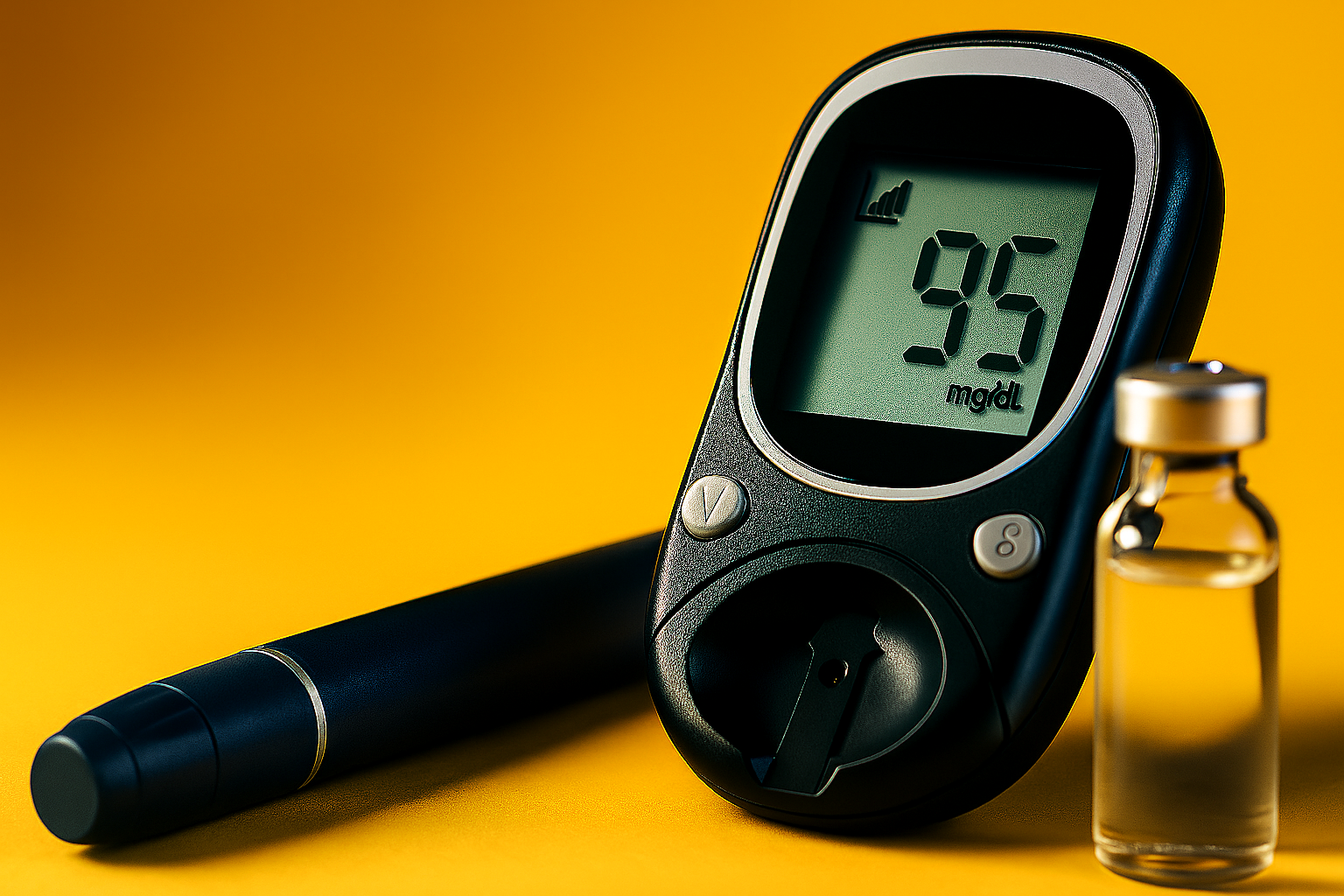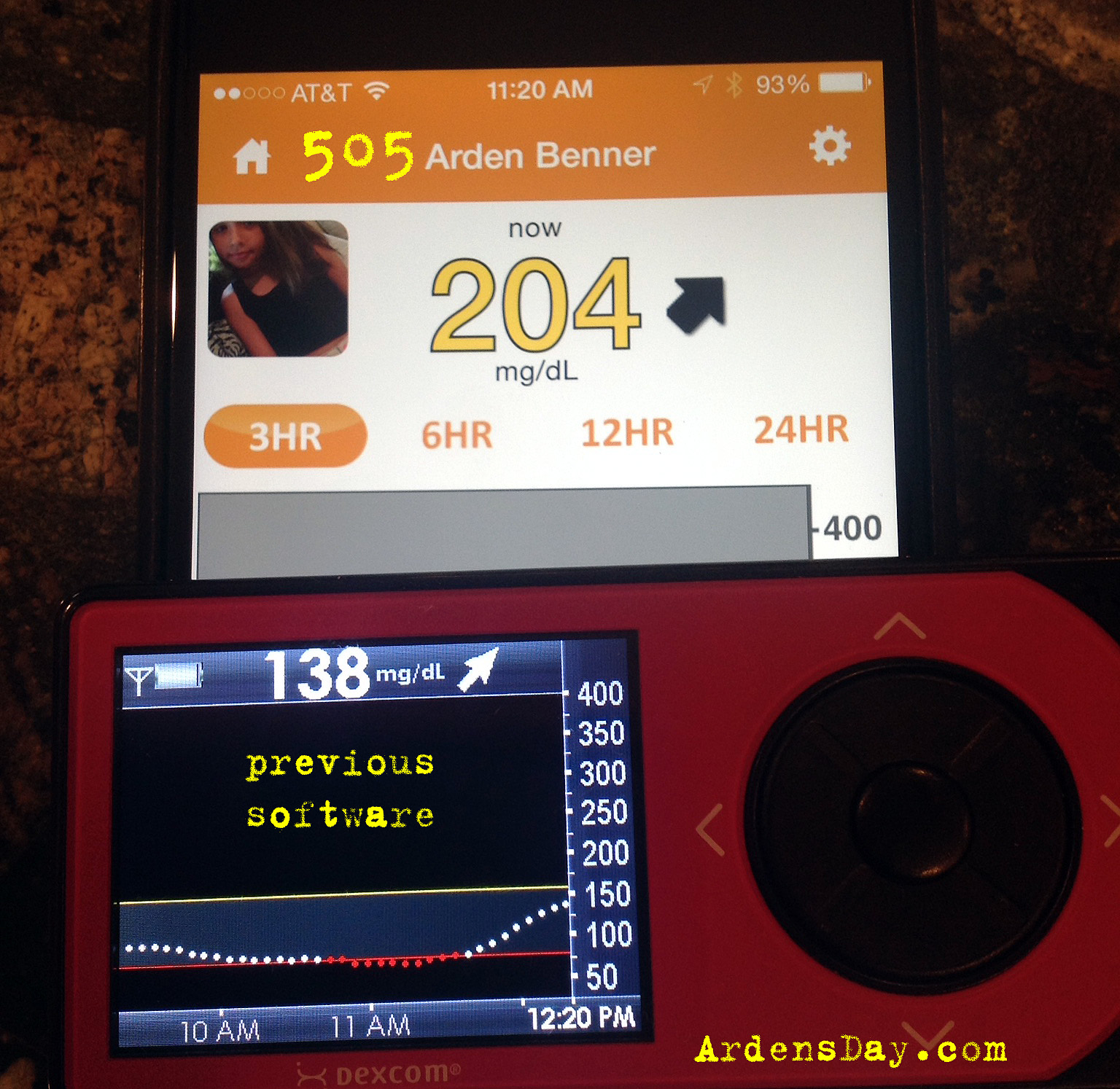Encapsulation Gives Me Reason to Hope
When I hear the word ‘cure’ it sends my mind racing with visions of science fiction television. I imagine my daughter being scanned by Doctor McCoy, in an instant his tricorder beeps and Arden’s pancreas springs back into action. Everyone in the room takes a pause for dramatic effect and type 1 diabetes is no more.
It’s that level of high yet unreasonable expectation, mixed with a healthy amount of cynicism that keeps me from becoming too excited when news of “promising research” is announced. I read the articles - well, I thoroughly peruse them - but most research news leaves me feeling like real-world science hasn’t quite caught up to the desires of the scientific community. Curing a disease without significant effort, crazy drugs and more than a bit of luck seems unlikely to me right now. In other words, I’m a tough sell.
Until I heard about Beta Cell Encapsulation…
Encapsulation grabbed my attention in such a big way that I asked it’s benefactor, JDRF (formally known as Juvenile Diabetes Research Foundation) if there was someone that I could interview about the technology. They were kind enough to put me in touch with JDRF Director of Discovery Research, Albert Hwa, PhD.
My conversation with Albert did a few things. It reminded me that I am not a scientist, gave me great hope for type 1 diabetes treatments and made me want to tell you about what I learned without being too sciencey - because I don’t want you to just peruse this article.
What is Encapsulation: In layman's terms, the process of encapsulation has made it possible for foreign cells to be introduced into the body after being coated (encapsulated) with a substance that protects them from your immune system. Specifically for the ViaCyte product design, the cells are inserted into a device that is currently the size of a business card and surgically placed under the skin during an outpatient procedure. The device allows its cellular passengers to interact with the body, measure the level of glucose and produce insulin without being identified by the immune system as a foreign body - all without anti-rejection drugs. Through the nature of science, encapsulation keeps your immune system from attacking the new insulin producing cells without blocking other needed functions. That’s science!
Is this a cure: Encapsulation is not a cure but it is the first stopgap between a cure and the reality that people living with type 1 diabetes experience that makes me say, “Where do I get this for my daughter?” It’s not a cure because the root issue is not being addressed, as the pancreas remains devoid of insulin-producing cells, and the autoimmune responses against them persists. The goal of this research is to introduce donor beta cells that will eliminate the need for manmade insulin. That would mean no more shots, finger sticks, insulin pumps, glucose monitors and the wildly fluctuating blood glucose levels that cause serious long-term health issues.
How long will the device last: Researchers aren’t positive at this time how long the cells will produce insulin before they need to be replaced, but a minimum of two years seems to be the initial hope and goal. Having a small procedure every two years is a vast improvement over what my daughter and the millions of other people who have type I diabetes deal with every moment of their lives.
More details you want to know: There are currently two companies conducting trials on encapsulation, both are being partially supported by the JDRF. The trial that was being held as I spoke with Albert Hwa was happening in a human being. Human trials are very exciting because so many ideas never get past animal trials; Most of the research that people with type 1 diabetes hear about cures mice but never makes the leap to helping people. The encapsulation human trials are in their infancy; Albert told me that even if everything went exactly perfect with the trials, it would still be “ten years” before Encapsulation could become a reality.
I chose to learn more about encapsulation because I’ve watched my daughter live for nearly a decade with type1 diabetes and this is the first time that I’ve felt like I was looking at a potential answer that could make it to market. I’m not a health care professional, just a father hoping for his daughter’s life to get better. In my estimation, encapsulation feels possible. I can imagine driving my daughter to her doctor to have a form of this device implanted, not unlike a pacemaker. For a guy that doesn’t usually feel very hopeful about stuff like this - I feel hopeful.
You can read more about encapsulation on the JDRF website, they even have the sciencey stuff:
Korn Frontman Supporting JDRF with New Song
- This story is reposted in it's entirety with permission -
A huge thank you to the hard rock music news web site Blabbermouth.net for their generosity.
KORN's new song "So Unfair", which was inspired by frontman Jonathan Davis' youngest child, Zeppelin's battle with Type 1 diabetes, can be unlocked by going to this location and contributing to JDRF (formerly known as the Juvenile Diabetes Research Foundation), a major charitable 501(c)(3) organization dedicated to funding type 1 diabetes research.
Says Davis: "I want to support this wonderful organization that is fighting tooth and nail to help these little kids out. It's a horrible disease and I hate seeing kids in pain.
"Your gift will help JDRF to create a world without Type 1 Diabetes.
"Everyone who contributes to this campaign will receive our new song, 'So Unfair'. I'm also going to invite one lucky contributor and a friend to our private recording studio to create and record a song with me.
"Good luck and see you in the studio!"
Beyond the dietary changes and other lifestyle accommodations, Jonathan's son's struggle has prompted the singer and his wife Deven to become deeply involved in raising funds for research.
In a video message promoting the "So Unfair" campaign (see above), Jonathan said: "[My son's had Type 1 diabetes] for now a over a year. It's a battle for the parents, it's a battle for him, it's a battle for everybody. It's a horrible disease.
"I was out on the road. My wife was calling me, saying Zeppy was really tired and just being lethargic and laying around, and something was wrong. I got home from tour, and we took him to the hospital and told them what was going on. And they started running tests and doing all these things, and they decided to check his blood sugar, just to see. I think he was, at that time, 290. And so that set off a flag for Type 1 diabetes. His glucose was high. And when that happened, that changed my life forever. I found out my son had Type 1 diabetes."
He continued: "It's been very hard dealing with that, because there's a lot involved. I have to constantly monitor his glucose, I have to constantly hurt him and stick him with needles, and he doesn't understand.
"It's a horrible disease and I really wanna do whatever I can do to make a difference to help find a cure for this. 'Cause it just doesn't affect my son. I feel for everyone who has this disease. It's not fair at all. And so I started writing this song, 'So Unfair', about it. Because you're asking a child not to eat candy. I've gotta watch his carbs, I've gotta watch the sugar count, I've gotta watch everything. And how do you tell a child, 'You can't eat this. You can't do this. You can't do that.' So it's been a constant battle with me. I constantly worry about… At night, I've had him… his blood sugar drop really low where it'd scare where he won't look up. It's a very difficult thing to deal with. But there's one thing that keeps me going. I have a support group, which is my family, JDRF. They give me hope. They're searching for a cure constantly. I have hope that they're working on an artificial pancreas. I've been reading a lot about that."
Jonathan added: "Now [Zeppelin is] seven years old and he won't do the pump; he doesn't wanna use a pump. For me, it would be a lot better for him to use the pump, because he only has to get stuck one time every two days, but right now I'm sticking him about ten times a day, between finger checks and actual shots.
"He's a little boy, so when we got to sleep at night, he'll wake up in the middle of the night and try to sneak food and he'll wake up with high glucose in the morning.
"There's all kinds of challenges that I'm facing.
"Bottom line, I really wanna try and do something to help find a cure for this disease. And that's the bottom line. And I just wanted to express my frustration and my feelings in writing that song, 'So Unfair', and I wanted to put it out there and give all the proceeds to JDRF, so they can find a cure for this bullshit. And I'm just gonna say it, it's fucked up, and I want it to be gone. I don't want no one to suffer from this.
"If you can, buy the song, 'cause I want all the proceeds to go to this wonderful foundation that is fighting tooth and nail to help these little kids out.
"I hate seeing kids in pain; it just kills me. So buy the song. Let's find a cure for this bullshit, please."
"So Unfair" is available here for preview and download. www.rallysong.com/korn
You can read this story where it originated at http://www.blabbermouth.net/news/korn-singer-jonathan-davis-discusses-his-sons-battle-with-type-1-diabetes-video/
It's a Diabetes Shoelaces Extravaganza on Arden's Day
Watch the video and then I'll explain...
So like I said in the video the cost of shipping is falling to my family, Usually we'd eat the cost but it's going to be a bit much so when I figure out how to do this... the one provision will be that anyone who wants a pair will have to pay the shipping costs - I'll know how much that will be next week.
Here's the next part. On Monday I'll be speaking with some people from Novo and I'm going to try to get them to see how popular the Novo #LaceUp4Diabetes laces are in the diabetes community. My hope is to talk them into making them available on a much larger scale in the future. With that in mind, it would be a huge help if you took a moment to let Novo know, here in the comments, how much you want the laces!
A huge thank you to Novo Nordisk, my wife Kelly and the great people she works with for giving up their laces for the DOC!
JDRF Children's Congress: Apply Now
There is still time to apply!
from JDRF.org:
JDRF 2015 Children’s Congress will take place on July 13–15, 2015, in Washington, D.C.
Every two years, more than 150 children living with type 1 diabetes (T1D) gather in Washington, D.C., to meet face-to-face with some of the top decision-makers in the U.S. government. The children, ages 4 to 17, represent all 50 states and the District of Columbia. The delegates in JDRF’s Children’s Congress enjoy a once-in-a-lifetime opportunity to help Members of Congress understand what life with T1D is like and why research to fund life-changing therapies until a cure can be found is so critical. They speak up on behalf of the millions of people living with T1D and the families and friends who love them.
Apply now for JDRF 2015 Children’s Congress.
Dexcom's New 505 Software Review and How To
The (Algo) Rhythm is Gonna Get You!
Last week the good folks at the FDA approved Dexcom's latest software for use in your G4 continues glucose monitor. Let's talk about what you'll need to know about installing the software on your receiver and if I saw a difference after upgrading.
What you need to upgrade?
A Dexcom G4 adult receiver (The company has announced that they will submit the software to the FDA in 2014 for approval in their pediatric receiver).
A Windows computer with Internet access
The charging cable from your Dex, minus the electric adapter, so USB to Dexcom
A few minutes
What to do...
Go to Dexcom's website and click on the "Download NEW Software 505" link. You will need to login to the Dexcom site, if you do not have an online account on their site, you can quickly make one.
A downloader program is installed on your computer. After launch it will ask for you to connect your receiver to the computer and the rest happens in short order. Please note TWO important things. The process will revert your receiver back to it's factory specs. Make notes of all your settings and be prepared to reconfigure the receiver (takes a few minutes) after installation. Also, you will have to restart your sensor session after the update, so you won't be getting any of that good BG data during those two hours - plan accordingly.
You don't have to wait until it's time to put on a new sensor to upgrade! Just choose 'Stop Sensor' on your receiver's menu and then restart the receiver after the software upgrade has finished. You DO NOT have to change your sensor site to do a sensor stop/start.
Should I do it?
Yes, here's why...
Dexcom is reporting that the MARD (mean absolute relative difference) will increase by 4%. In plain language, your Platinum G4 without the new algorithm has a 13% MARD , the new software clocks in at 9% MARD - a lower MARD is more accurate.
Did you know? The new 505 software is the version currently being used in artificial pancreas trials!
What did I see after the upgrade?
We upgraded Arden's receiver and have been running it for a week in conjunction with another G4 receiver that is using the previous software. My in a nutshell review -- the new software has been consistently closer to our finger stick checks than the previous software. We use the OmniPod meter with Freestyle strips. This is not to say that the previous software is always farther off then that of the newer version - at times it has been and at times it hasn't. The newer version (505) has been consistent with my prior expectations or better, never worse. But when it is appreciably better, it is 20 - 30 points more accurate and that's worth upgrading for in my opinion. It also seems to deliver more accurate fall and rise rates that don't linger after the change in BG has leveled.
Here's some side-by-side pics...
The first four images show a BG rise (I confirmed with a meter not pictured). You can see that the previous software lagged behind the rise and never reached the actual BG which topped out at 213 (on meter). The fifth image is an example of no significant difference between 505, previous and meter. The last image shows a metered 68 that registered as a 6o with the new software but an alarming 46 with the previous version. After testing and calibration the previous version adjusted to 60, the new version adjusted to 66.
Conclusion...
Obviously my observations are just that, observations. Nothing very scientific was done and I am not a doctor as my disclaimer mentions. The upgrade is fast and simple but Mac users will have to bum a Windows machine from a friend.
The 505 software is currently not approved for the pediatric version of the G4 but Dexcom announced that they will be applying with the FDA in the last quarter of 2014 - that's any day.
The upgrade is free, better and the next step toward CGM data that perhaps one day you'll be able to dose insulin from - might as well do it... I don't see any downside.
Managing type 1 Diabetes just got a little bit easier in my opinion and I expect to see a difference in Arden's A1c after a full three months with the new software - time will tell.
































